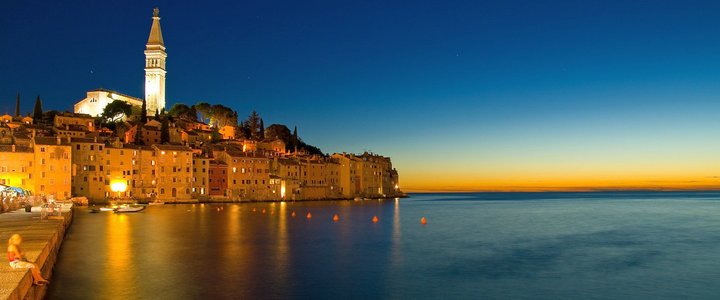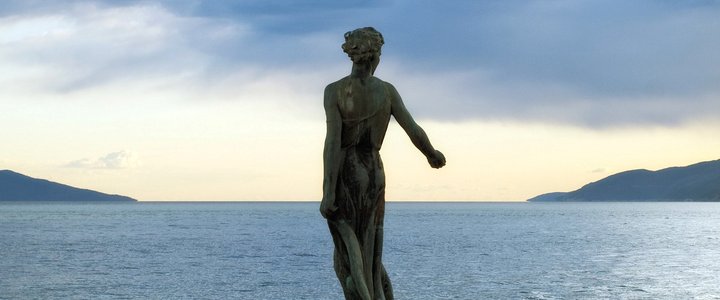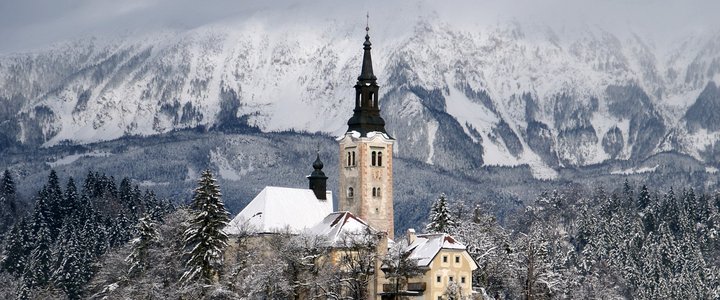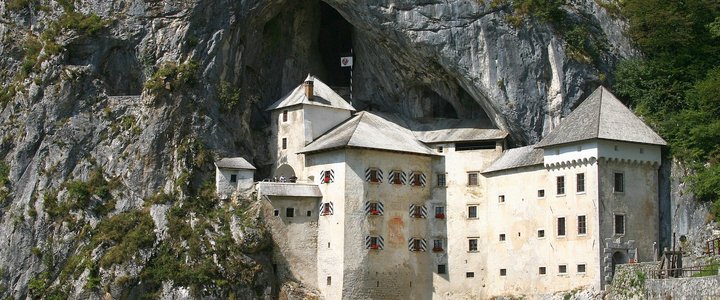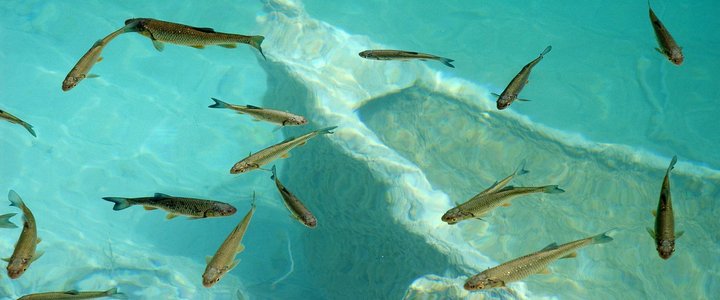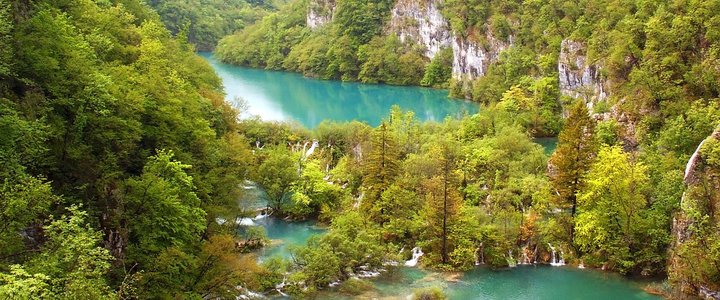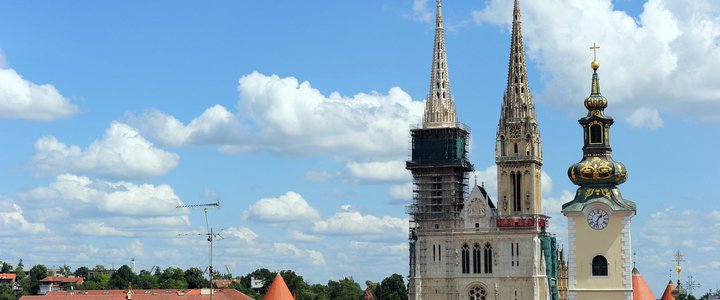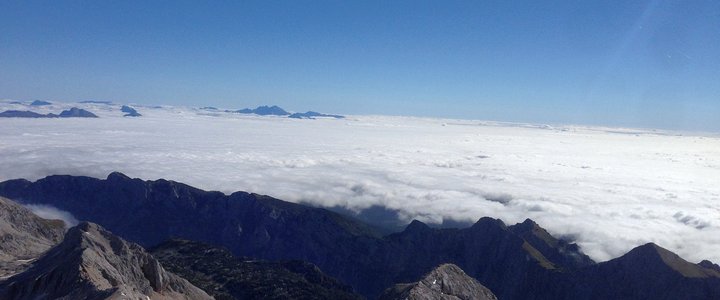Join us on our tour and discover some of the most beautiful places in Croatia and Slovenia in a relaxing and friendly way.
In seven unforgettable days we'll show you some of the most beautiful places in Croatia and Slovenia.
From Zagreb, the Croatian capital and a city which attracts with its charm and simplicity across the world famous sixteen magical Plitvice Lakes to the beautiful Adriatic coast and its charming jewel Opatija. Then, across the green and always somehow mysticaly attractive Istria and its small stone towns and again to the sunny coast and the old town Rovinj.
Great places in neighboring Slovenia are expecting us after Istria and Croatia. We'll set off into the secret depths of Postojna caves and also touch the high peaks of the Alps which ascend above the Lake Bled. Ljubljana, the capital of Slovenia waits for us at the end of this beautiful story. A charming central European town, rich in cultural heritage always open and friendly will be the perfect ending of a perfect trip.
Included in your adventure:
Prices
| Private tour | |
|---|---|
| Persons | Price |
| 2 | 2990 € |
| 3 | 2790 € |
| 4 | 2490 € |
| 5 | 2290 € |
| 6 | 2090 € |
All prices are expressed in euro and all specified prices are based per person.
If you organize a trip for more persons than indicated in the price list, please feel free to contact us at igor@zagrebtours.com so we can make an offer that fits your needs.
We can arrange tours for groups of all sizes, even if they are larger than the capacity specified in our price list. We have extensive experience in accommodating large groups, and we will work with you to create a customized tour that meets your needs and budget.
Itinerary
Day 1 ZAGREB
Welcome to Zagreb, the capital of Croatia and one of the oldest central European cities. Your guide will meet you at the Zagreb Airport and transfer you to your hotel in Zagreb. After you accommodate in your hotel in the city centre, we suggest that you relax yourself in an evening walk through the center of Zagreb and enjoy your first evening in one of Zagreb's many cafes and restaurants. Overnight in Zagreb.
Accommodation: Hotel Esplanade Zagreb
Day 2 ZAGREB
After breakfast we'll take you to discover Zagreb, a city with a human scale. The city grew between the Medvednica Mountain and the river Sava, from the 11th century all the way till the present days. Old medieval settlements of the Upper town, Gradec and Kaptol, remarkable architecture of the Lower town, numerous museums and art galleries, squares, fountains, monuments and green parks. That's Zagreb and all of that makes our city a pleasant place to walk through and attracts its visitors with the vivid street atmosphere. Spend your afternoon in one of many interesting museums, take a walk in the Botanical garden or Maksimir Park or just enjoy in a friendly atmosphere which Zagreb offers you. Overnight in Zagreb.
Accommodation: Hotel Esplanade Zagreb
Day 3 ZAGREB – PLITVICE LAKES – OPATIJA
After the Lakes and the continental part of Croatia, we continue our journey towards the coast of the blue Adriatic and the coastal resort Opatija. First we will check into the hotel and then we are going for a walk along the famous Opatija promenade. We can say that Opatija is really a true lady of the Adriatic Sea, with many luxury hotels and old villas thread along the Riviera like a pearls on the necklace, connected with green and splendid parks and gardens. If we stop for a moment and close our eyes, we could still feel the breath of the old times, the steps of the Austrian nobles, the empire Franz Joseph himself and many other distinguished persons who have chosen this jewel of Adriatic for their vacation. Overnight in Opatija.
Accommodation choice: Hotel Bristol / Villa Kapetanović
Day 4 OPATIJA – HUM – MOTOVUN – ROVINJ
After breakfast we will leave Opatija and drive to Istria – the green oasis with many picturesque hills, old towns, castles and mystical stories. We will visit the "smallest town in the world" – Hum and introduce you to the first Croatian script – glagolitic script. We will see the medieval town Motovun, which rises as a symbol of Istria on a hill above the river Mirna valley and find out why it is called "the Mistress of the valley". We'll end this day on the coast again, in Rovinj, which is the most romantic coastal town in Istria. A town surrounded by sea cherished by its protector saint Euphemia from a high church bell tower. After we check into a hotel, we are going to stroll along the old stone lanes of the Old city and look for traces of the Rovinj's rich history. Overnight in Rovinj.
Accommodation choice: Villa Tuttorotto / Villa Valdibora
Day 5 ROVINJ – POSTOJNA – LAKE BLED
Today we are driving across northern part of Istria and slowly leaving Croatia towards neighboring Slovenia. Our first Slovenian stop will be Postojna, little town famous for the Postojna Cave. This natural wonder, the underground world of caves is filled with spectacular limestone stalactites and stalagmites which form pillars and take on fantastic shapes and forms. We will take a train ride into the heart of the underground fairyland and admire the greatness of the geological history of the Earth. Then we will set off from the dark depths of the Earth's interior towards the pure whiteness of the Alps and the clear blue skies which wait for us at the Lake Bled. On arrival we will checki into a hotel near the lake. We suggest that you spend your afternoon enjoying the amazing views on the high peaks of the Alps. Whether you take a walk around the Lake or visit the old castle above the Lake or enjoy "pletna" boat ride to St. Mary's Island, you will definitely feel like the time has stopped and you are a part of wonderful fairytale. Overnight at Lake Bled.
Accommodation: Hotel Triglav
Day 6 LAKE BLED - LJUBLJANA
Spend a little bit of this morning relaxing some more on a fresh air and then we head to the capital of Slovenia – Ljubljana, a town where culture is not just a phrase but the way of life. After we check into a hotel, we'll take a walk along this charming city. Strolling through the Old Town district we will explore many baroque buildings, the colorful farmer's market, the cathedral of St. Nicholas and up the hill, above the city we'll see the old medieval fortress which stands up there like an old guardian of the city. In the evening you should definitely relax and enjoy in one of many cafes and restaurants in the city centre, along the river Ljubljanica. Overnight in Ljubljana.
Accommodation choice: Hotel Allegro / Lesar Hotel Angel
Day 7 LJUBLJANA – Departure
Today is the last day of our tour. After breakfast, your guide will drive you the Ljubljana Airport (Brnik) where you are expecting your flight back home. We wish you a safe journey and we hope that you will always gladly remember these seven days spent with us. Goodbye!

